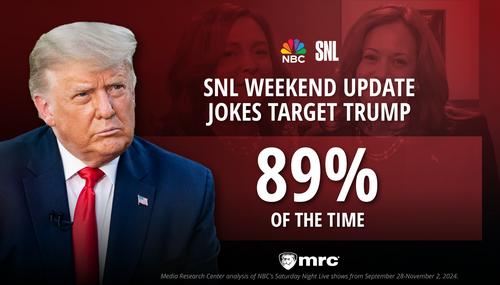Forbes just published its 20 Most Miserable Cities List for 2013. The magazine left off several obviously more "worthy" contenders, perhaps because its decisions to include and exclude certain criteria were, to say the least, more than a little odd.
I have listed the magazine's top twenty following the jump, along with each city's mayor and that person's political leanings, showing a commonality the magazine's Kurt Badenhausen failed to observe:
20. Youngstown, Ohio -- Charles P. Sammarone, Democrat
19. Gary, Indiana -- Karen Freeman-Wilson, Democrat
18. Poughkeepsie, New York -- John C. Tkazyik, Republican
17. Cleveland, Ohio -- Frank Jackson, Democrat
16. Atlanta, Georgia -- Kasim Reed, Democrat
15. Atlantic City, New Jersey -- Lorenzo Langford, Democrat
14. Milwaukee, Wisconsin -- Tom Barrett, Democrat
13. Camden, New Jersey -- Dana Redd, Democrat
12. St. Louis, Missouri -- Francis Slay, Democrat
11. Toledo, Ohio -- Michael Bell, ran as an independent but is a lifelong Democrat
10. New York, New York -- Michael Bloomberg, Nanny State "Independent" since 2007; Democrat before 2001; ran as a Republican in 2001 just to get a spot on the ballot.
9. Waukegan, Illinois -- Robert G. Sabonjian, Democrat (see first paragraph following this list)
8. Stockton, California -- Anthony Silva, a Republican sworn into office by Democrat and former California Assembly Speaker Willie Brown.
7. Warren, Michigan -- James Fouts, Republican
6. Vallejo, California -- Osby Davis, Not determinable
5. Modesto, California -- Garrad Marsh, "non-partisan," clear Democrat sympathies
4. Chicago, Illinois -- Rahm Emanuel, Democrat
3. Rockford, Illinois -- Larry Morrissey, Independent
2. Flint, Michigan -- Dayne Walling, "nonpartisan," formerly worked for U.S. Rep. Dale Kildee, a Democrat
1. Detroit, Michigan -- Dave Bing, Democrat
Those who verify my links will notice that Forbes really listed Lake County, Illinois at Number 9. Sorry guys, a city is a city, and a county isn't. Waukegan is Lake County's county seat, and definitely deserves its spot on the list.
So the lineup (classifying Bloomberg, Toledo's Bell, Modesto's Marsh, and Flint's Walling as Dems, which philosophically is clearly what they are):
- Democrats -- 15
- Republicans -- 3
- Independent/not determinable -- 2
I would question the inclusion of Poughkeepsie (population 32,790) as a "city," and the only bad things Forbes had to say in its slide show were that its residents suffer from long commutes and property taxes are high. Those aren't exactly unique negatives.
Poughkeepsie's most obvious candidate for replacement is bankrupt San Bernardino, California, "the largest city ever to choose to file for protection under Chapter 9 of the U.S. Bankruptcy code." The mayor there is Pat Morris, a Democrat. San Bernardino County has seriously considered using the government's eminent domain powers to seize foreclosed properties from the banks which own them.
Despite the fierce competition, it's also hard to imagine how Forbes could have left out the following large cities: Oakland, California (mayor: Jean Quan, Democrat; third-highest violent crime rate in the U.S. in 2011; unforgivably overindulged Occupy movement thugs during 2011 and 2012); Baltimore, Maryland (Mayor: Stephainie Rawlings-Blake, Democrat; recently tagged as "on a path to financial ruin"); New Orleans (mayor: Mitch Landrieu, Democrat; highest murder rate in U.S.); or relatively small Scranton, Pa. (Mayor: Christopher Doherty, Democrat; recently "took the radical step of slashing municipal salaries to minimum wage to meet payroll").
Forbes changed its methodology this year, which may explain why the obvious contenders didn't make the list:
The metrics include the serious: violent crime, unemployment, foreclosures, taxes (income and property) and home prices. We also include less weighty, but still important quality-of-life issues like commute times and weather.
We tweaked the methodology in this year’s list in response to feedback from readers, dropping our rankings of both pro sports team success and political corruption, since both were based on regional, rather than city-specific data. We also added a new measure—net migration—which we see as a clear gauge of whether or not residents feel a community is worth living in.
The use of net-migration is an improvement, but two other methodology decisions this year were weak.
"Commute times" seems hardly worthy of inclusion, given that people choose where to live in full knowledge of what their commute times are. I could see including measurements relating to the frequency of serious traffic jams, but not "commute times" in general.
The magazine's exclusion of "corruption" is a joke. Surely the researchers at Forbes can determine the degree of corruption in America's various cities without copping out that the only available data is "regional." Another justification for why both Baltimore and New Orleans should be on the list is that each city's previous mayor was charged with crimes. Baltimore's Sheila Dixon was convicted in 2009; if there has been a major reduction of corruption there, I haven't heard about it. Former Mayor Ray Nagin of New Orleans is currently at the arraignment stage on bribery charges which seem all but certain to end in convictions.
Overall, I'd say Forbes has done a relatively miserable job with its miserable cities list.
Cross-posted at BizzyBlog.com.




